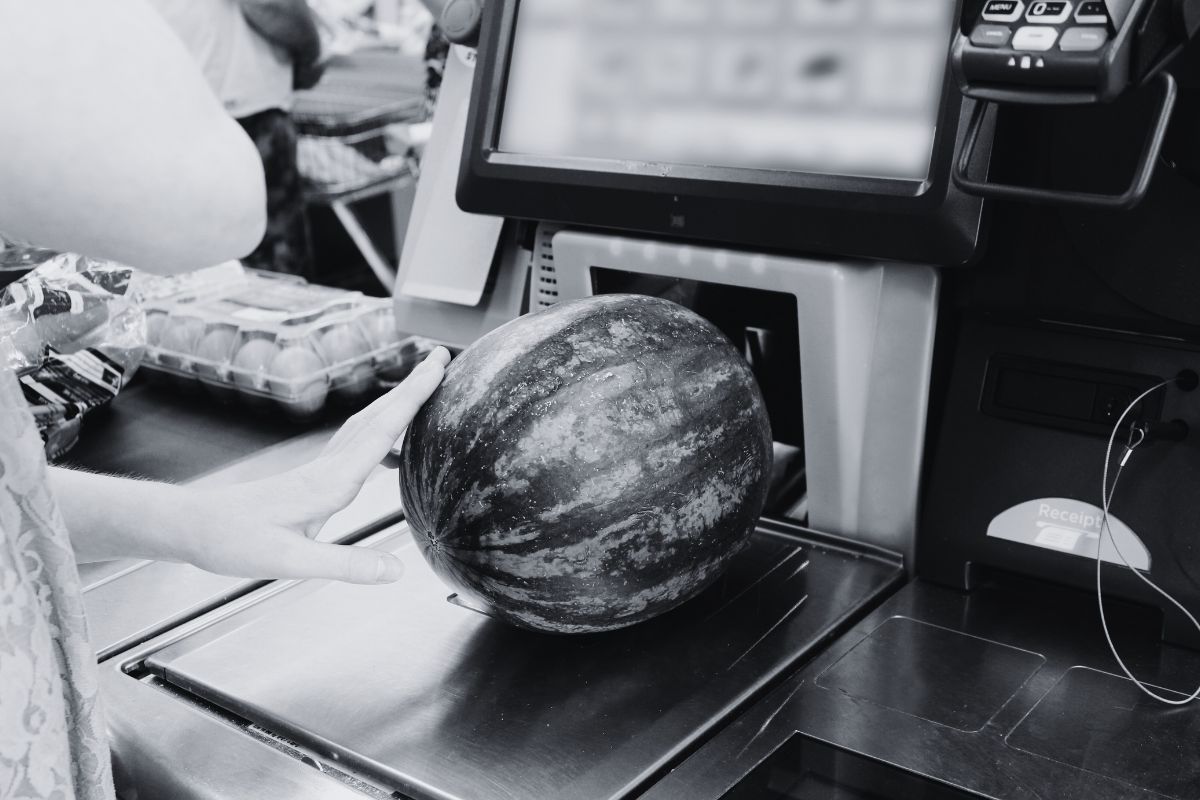Nichts verpassen & anmelden:
Written by AI
The Advantages and Disadvantages of Self-Checkout Counters in Supermarkets
In recent years, self-checkout counters have become an increasingly popular option in supermarkets. These counters allow customers to scan and pay for their purchases themselves, without relying on the help of a cashier. While many people appreciate the simplicity and convenience of this technology, there are both advantages and disadvantages that should be considered when evaluating its effectiveness.
What Are Self-Checkout Counters?
Self-checkout counters are electronic payment terminals that enable customers to scan and pay for their items on their own. These counters are equipped with various features, such as a touch-screen display, a barcode scanner, and a card reader. Customers can scan their items, check the prices, and choose their payment method. After completing the purchase, they receive a receipt and can leave the supermarket. Self-checkout counters are intended to reduce wait times and make the shopping process more efficient.
Definition and Function of Self-Checkout Counters
Self-checkout counters are automated payment stations that allow customers to scan and pay for their items independently. These counters typically feature a touch-screen display where customers can select their items and complete the purchase. The advantage of this technology is that customers do not have to rely on the help of a cashier and can manage the shopping process on their own. This aims to reduce wait times and avoid inefficient workflows.
How Self-Checkout Counters Are Used in Supermarkets
The use of self-checkout counters in supermarkets has spread significantly in recent years. Many supermarkets offer this option as an additional service for their customers. The counters are generally clearly visible and provide instructions to assist customers in using them. Additionally, staff are often available nearby to help with questions and issues. Self-checkout counters are usually equipped with a surveillance system to prevent theft and fraud.
Another advantage of self-checkout counters is the ability to customize the shopping process. For example, customers can select their preferred language to make the process even more user-friendly. Moreover, some supermarkets offer the possibility to display personalized offers and discounts directly on the self-checkout terminal. This allows customers to benefit from additional savings during the payment process.
Some supermarkets even go a step further and offer their customers the option to create their shopping list online in advance and then retrieve it directly at the self-checkout terminal. This makes the shopping process even more efficient, as customers can quickly and easily find their items.
The Advantages of Self-Checkout Counters
There are various advantages that come with using self-checkout counters in supermarkets. One of the most important advantages is time savings and efficiency. Customers can scan and pay for their items more quickly, as they do not have to wait for a cashier to assist them. This leads to shorter waiting times and a smoother overall shopping process.
Time Savings and Efficiency
By using self-checkout counters, customers can save time and make the shopping process more efficient. Instead of standing in line and waiting for a cashier, they can scan and pay for their items immediately. This not only reduces waiting times but also allows customers to complete their purchases at their own pace.
Reducing Queues
Another significant improvement associated with the use of self-checkout counters is the reduction of queues. In traditional supermarkets, long lines at the registers can occur during peak times. With self-checkout counters, customers have the option to bypass these queues and scan and pay for their items independently. This leads to faster processing of customers and a more efficient experience overall in the supermarket.
Improving Customer Experience
The introduction of self-checkout counters also enhances the customer experience. Customers have the freedom to control their shopping process themselves and are not reliant on the assistance of a cashier. This can lead to a feeling of independence and control. Additionally, customers can verify their items more accurately and ensure they are paying the correct price. This contributes to customer satisfaction and can strengthen the bond between customer and supermarket.
Besides the obvious advantages, there are further aspects that make self-checkout counters attractive. For instance, they provide customers the opportunity to handle their purchases discreetly. Some people prefer to scan and pay for their items independently to maintain their privacy. Self-checkout counters allow them to do so without a cashier observing their purchases.
Moreover, self-checkout counters enable supermarkets to better plan their staffing. Since customers scan and pay for their items themselves, less staff is required at the registers. This results in cost savings for the supermarket and allows them to deploy their staff more efficiently. At the same time, customers still have the option to receive assistance from a staff member nearby if they have questions or issues.
The Disadvantages of Self-Checkout Counters
Alongside the advantages, there are also some disadvantages associated with using self-checkout counters. One of the main disadvantages is the potential for technical problems and user errors that may occur. Additionally, there is a certain risk of theft and fraud associated with using self-checkout counters. Furthermore, these counters also have implications for jobs in retail, which is another disadvantage that should not be overlooked.
Technical Problems and User Errors
A potential drawback of self-checkout counters is the technical problems and user errors that can arise. If the counters do not function properly, or if customers have difficulty scanning or paying for their items, this can lead to long waiting times and frustration. Additionally, some customers may require assistance in operating the counters, which necessitates additional resources.
Another aspect that should be considered regarding technical problems and user errors is the security of customer data. If self-checkout counters are not adequately protected, there is a risk that sensitive information could be stolen or misused. This could lead to significant financial and legal consequences for the supermarket.
Risk of Theft and Fraud
Another significant disadvantage of self-checkout counters is the risk of theft and fraud. Because customers scan and pay for their items independently, there is a possibility that some customers may attempt to skip scanning items or intentionally reduce the purchase price. This can result in financial losses for the supermarket. Additionally, it can be difficult to detect and prevent theft when using self-checkout counters, as not all customer interactions are monitored by a cashier.
To mitigate the risk of theft and fraud, some supermarkets employ surveillance technologies such as cameras and weight sensors. These technologies are designed to detect suspicious activities and notify staff to take immediate action. Despite this, the risk remains and requires ongoing monitoring and training of the staff.
Impact on Retail Jobs
The introduction of self-checkout counters also impacts jobs in retail. In traditional supermarkets, multiple cashiers are needed to handle customer transactions. However, with self-checkout counters, fewer cashiers are required as customers can shop independently. This can lead to job losses and impact employment in retail.
It is important to note, however, that the introduction of self-checkout counters does not necessarily mean a complete replacement of cashiers. In some supermarkets, cashiers are still needed to assist customers with technical issues, monitor the self-service stations, and enhance customer service. Additionally, released workforce can be redeployed for other tasks in the supermarket, such as improving inventory or assisting customers.
The Future of Self-Checkout Counters
Despite some disadvantages, there is also a promising future prospect for self-checkout counters. Developments in technology and trends may help minimize the problems associated with self-checkout counters. Furthermore, laws and regulations could be introduced to combat theft and fraud and make the use of self-checkout counters safer.
Technological Developments and Trends
The technology for self-checkout counters is continuously evolving, and there are already various innovations that could address existing issues. For example, improved scanners and sensors could enhance accuracy and efficiency when scanning items. Additionally, advancements in artificial intelligence could help improve the user-friendliness of the counters and minimize technical problems.
A promising trend is the integration of biometric identification systems into self-checkout counters. By using fingerprint or facial recognition technology, customers can confirm their identity, thus enhancing security. This could help reduce fraud and theft and strengthen consumer trust in the use of self-checkout counters.
Impact on the Shopping Experience
The use of self-checkout counters also affects the shopping experience. While some customers appreciate the independence and control that self-checkout counters offer, others may prefer personal contact with a cashier. Supermarkets need to consider these differing needs and may introduce hybrid models that offer both self-checkout counters and traditional cashier stations.
Another aspect that influences the shopping experience is the possibility of personalization. By using customer profiles and purchase histories, self-checkout counters could provide personalized recommendations and special offers. This would enable customers to have a more individualized shopping experience and strengthen customer loyalty.
Regulatory Regulations and Ethical Considerations
To make the use of self-checkout counters safer and more effective, regulatory regulations and ethical considerations may play a role. For example, laws could be introduced that establish liability in cases of technical problems or fraud. Ethical questions could also be discussed, such as customer privacy protection and monitoring of self-checkout counters.
Another important aspect is accessibility. It is crucial that self-checkout counters are accessible to people with disabilities. This may require the implementation of special features, such as tactile markings and voice output, to facilitate usage for all customers.
Overall, there are advantages and disadvantages to using self-checkout counters in supermarkets. The benefits include time savings, queue reduction, and improved customer experience. However, technical issues, risks of theft and fraud, as well as impacts on retail jobs can present challenges. The future of self-checkout counters may be influenced by technological developments, adjustments in the shopping experience, and regulatory regulations. It remains to be seen how this technology will evolve and what effects it will have on the supermarket industry.








